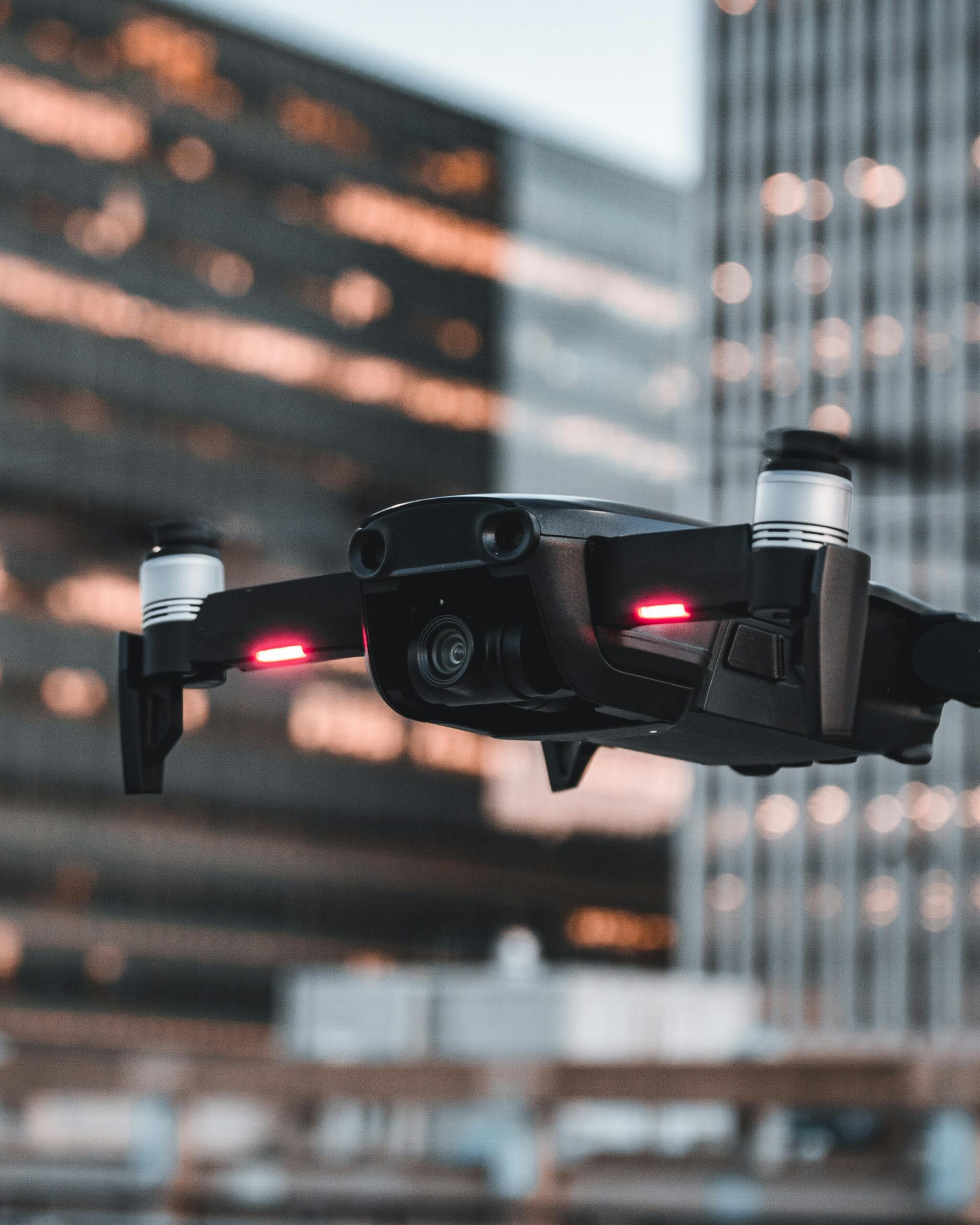📌 What is a Drone?
A drone is an unmanned aerial vehicle (UAV)—essentially a small flying machine that can be controlled remotely. Drones are used for various purposes, from photography to racing, and they come in many sizes and types.
🔼 Fundamental Concepts
In this course, you will learn the fundamental concepts of drones and piloting (flying) a drone.
1. Parts of a Drone
- Frame: The body or skeleton of the drone.
- Motors: Power the propellers to make the drone fly.
- Propellers: Spin to create lift and push the drone into the air.
- Battery: Provides power to the motors and electronics.
- Controller: This is the remote device you hold to control the drone’s movements.
- Camera (Optional): Many drones have cameras for taking pictures or recording videos.
2. Basic Flight Controls
Using the controller, you can manipulate the drone in several ways:
- Throttle: Controls how high or low the drone flies.
- Yaw: Rotates the drone left or right.
- Pitch: Tilts the drone forward or backward to move in those directions.
- Roll: Tilts the drone left or right to make it move sideways.
💡 How to Fly a Drone for the First Time
- Check the Weather: Before flying, ensure it’s a calm day with no strong winds.
- Charge the Battery: Fully charge the drone’s battery and check that the controller is also ready to go.
- Find an Open Space: It’s best to start in a large, open area, such as a park or a field, where there are no trees or obstacles.
- Power On: Turn on your drone and controller. Pair them by following the manufacturer’s instructions.
- Takeoff Slowly: Gently push the throttle to lift the drone off the ground. Start with small movements and avoid fast or jerky actions.
- Practice Hovering: Keep the drone steady in one spot (called hovering). This is a key skill for good control.
- Practice Simple Movements: After mastering hovering, try moving the drone forward, backward, left, and right using pitch and roll.
- Land Smoothly: Use the throttle to lower the drone slowly and land it gently on the ground.
🧪 Beginner Tips for Success
- Start Slow: It’s easy to get excited, but keep your movements slow and deliberate until you get the hang of the controls.
- Stay Low: Avoid flying too high when you’re learning. This keeps you in better control and avoids crashes.
- Observe Battery Life: Keep an eye on battery indicators, as many drones will automatically land when the battery gets low.
Course Curriculum
🔼 Fundamental Concepts for Drone Flying
💡 Drone Flying Examples and Metaphors
📚 Related Themes in Drone Flying
🧪 Drone Flying Tests and Simulations
🧑✈️ How Real-World Drone Pilots Train for Professional Uses
📚 Drone Applications in Space Exploration and Military Uses
🚚 Drones in Logistics and Delivery
🛸 Overview of the DJI Drone Line: Mini, Avata, Mavic 3, and More
